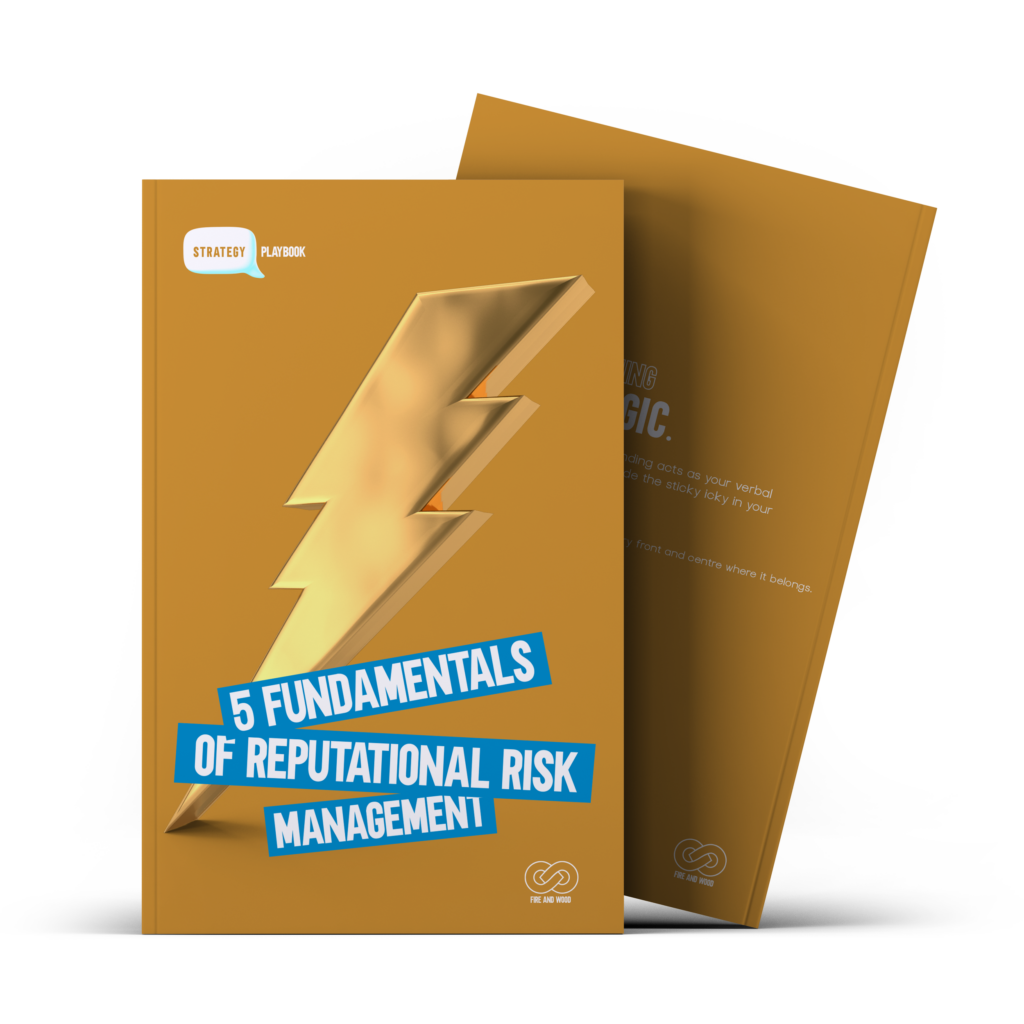Strategy
5 Ways to Get Into a Risk Response Mindset
Starting-up a start-up from the eyes of starter-uppers.

Todd O'Keefe
Chief Content Officer
Table of Contents
Monitor internal and external environments
Getting ahead of a negative risk response comes in many forms.
Some we can anticipate—others we can’t.
To be effective, you have to closely monitor internal and external environments for reputation risk management.
This includes more than watching what’s happening internally within your leadership team and your employees.
It also includes paying attention to industry shifts and trends where your brand runs the risk of being swept up in negative perceptions that are not even your fault.
All it takes is one car brand to come under fire for using faulty airbags for consumers to question all airbags—in all cars.
The wide optics of this perception impacts trust in your product and reputation even if your airbag deployment system is a completely different product.
The more proactive you are? The less time you spend being reactive.
5 ways to get into a risk response mindset
To think proactively about your reputation it’s important to consider getting into a mindset to respond to risk.
1. Understand what is in your control
For instance, if your competitor’s product makes headlines for a defect, get your communication ready to reinforce your product’s stability and therefore calm consumer fears.
Or take how recent skyrocketing gas prices increase the cost of your goods. You can’t control that.
But, you can anticipate consumer response from raised prices and you get in front of your communications.
2. Consider every possible scenario
Play the devil’s advocate at your weekly or monthly PR and marketing team meetings and consider every possible icky and scary scenario.
What if the CEO was indicted for fraud, a patron found a mouse in your restaurant or even a big account filed for bankruptcy.
What would you do first?
Running possible worst case scenarios takes a lot of the fear out of the equation if or when something does happen.
3. Remember the positives
If an incident does occur we often go into damage control mode and we forget all the good that our company has done.
As you think through possible negative scenarios remind your customers about all the good things your company has done from philanthropy to impact to the industry, to corporate social responsibility.
4. Create a reputation response flow
Fourth, create a reputation response flow.
Think ahead to who will be responsible for each piece of your communication strategy.
Does that person have the training and the insight to mitigate risk?
Ensure you have fully communicated your flow to everyone involved so everyone is clear on what to do.
5. Consider all stakeholders
And finally, consider all stakeholders as you plan for any type of incident—positive or negative.
Typically we only worry about the media and we have images of vans full of reporters with cameras and microphones showing up at our office.
Cleaning up the mess
Brands need to be more proactive than ever when it comes to protecting and directing its reputation risk management.
Risk comes in all shapes and sizes, such as lawsuits, financial failure, employee exhibiting bad behaviours and even product tampering.
And while those risks are bad enough on their own, don’t compound the risk with missteps, accidents and mishandling public response.
Understanding the fundamentals of reputation risk management starts with signals of what could go wrong—so you don’t have to deal with what is going wrong.
Always ask the bigger questions while keeping an eye to the smaller details.
Both literally wash the hand of the other for us.
Issue and reputation management comes easy because we work hard at it.
We care about human connections. That’s why we are more than just an integrated media agency.
We are a story branding studio.
Trust us to get you through the mistake and come behind you to clean up the mess.
Looking for more ways to navigate reputational risk management?
Grab your playbook for insights into why reputation is important and how to predict, prepare and prevent risks to your brand.
Gain more confidence when handling brand crises and fixing risk plan vulnerabilities.
GET THE GOODS
Our starter-upper blog is a place you’ll find creative trade secrets, shop talk and the trials and errors of a creative incubator.
Our goal is to make things people will enjoy and want to share—from storytelling and copyhacking best practices to articles, videos and white papers.
Join the Starter-Upper newsletter today and get more articles like these ones.

PROTECT
YOUR BRAND
REPUTATION
Take a deep dive into your
free copy of the 5 Fundamentals of Reputational Risk Management and start building a bulletproof brand reputation that stands the test of time.
GET THE STARTER-UPPER INSIGHTS

